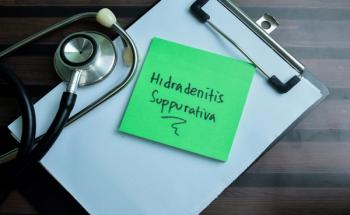
Attending to Psychosocial Concerns for Those With Epidermolysis Bullosa
A recent literature review, involving an international multidisciplinary panel of social and healthcare professionals and people living with epidermolysis bullosa (EB), was conducted to create evidence-based guidelines to optimize psychosocial well-being in EB, given that there is no cure or treatment.
Epidermolysis bullosa (EB) is a group of rare genetic disorders resulting in skin fragility and other symptoms, including blisters and wounds resulting from ordinary friction on the skin. A recent literature review, involving an international multidisciplinary panel of social and healthcare professionals and people living with EB, was conducted to create evidence-based guidelines to optimize psychosocial well-being in EB, given that there is no cure or treatment.
The severity and scope of EB varies widely by type and subtype; average life expectancy for those with the most severe form of the disease is about 30 years.
EB management is primarily supportive, focusing on symptom control and wound care. Wound care can be a very painful and lengthy process, lasting up to several hours a session, done daily or every other day for most patients. This takes time away from other activities for both the patient and the caregiver, including work, school, and leisure activities.
Based on the review, 6 outcomes were found to be relevant with regard to the psychosocial health of those affected by EB: quality of life (QOL), coping, family, well-being, access to healthcare professionals, and pain. However, the authors noted that evidence from interventional studies is limited; as a result, the guidelines can inform future research and provide general recommendation to start an individual-focused approach for supporting patients with EB.
The management of pain is a key part of psychosocial well-being, affecting QOL and coping with EB. Physical discomfort plays a major role in the limitations that people with EB experience and requires a great amount of effort and energy to manage. However, there is a lack of intervention studies exploring the application and efficacy of psychosocial techniques for managing EB pain. Techniques such as pacing and planning activities, relaxation, distraction, and managing anxiety, tension, and cognitive attributions may all be helpful; however, there is no clear evidence to support them as a recommendation.
Living with EB is more bearable when patients feel supported and integrated in society; however, there can be a lack of knowledge and understanding about EB in schools, workplaces, and elsewhere. Moreover, many social activities or public places are not sufficiently adapted for the needs of people with EB, the authors said, and a focus on raising awareness of EB in general and on the psychosocial needs of people with EB is essential.
Participating in a normal social life and having peer support is key for people with EB to cope with the disease’s difficult effects. In addition, from infancy, children with EB need to be encouraged to follow their psychosocial developmental milestones.
Reference
Martin K, Geuens S, Asche JK, et al. Psychosocial recommendations for the care of children and adults with epidermolysis bullosa and their family: evidence based guidelines [published June 1, 2019]. Orphanet J Rare Dis. doi: 10.1186/s13023-019-1086-5.
Newsletter
Stay ahead of policy, cost, and value—subscribe to AJMC for expert insights at the intersection of clinical care and health economics.








































